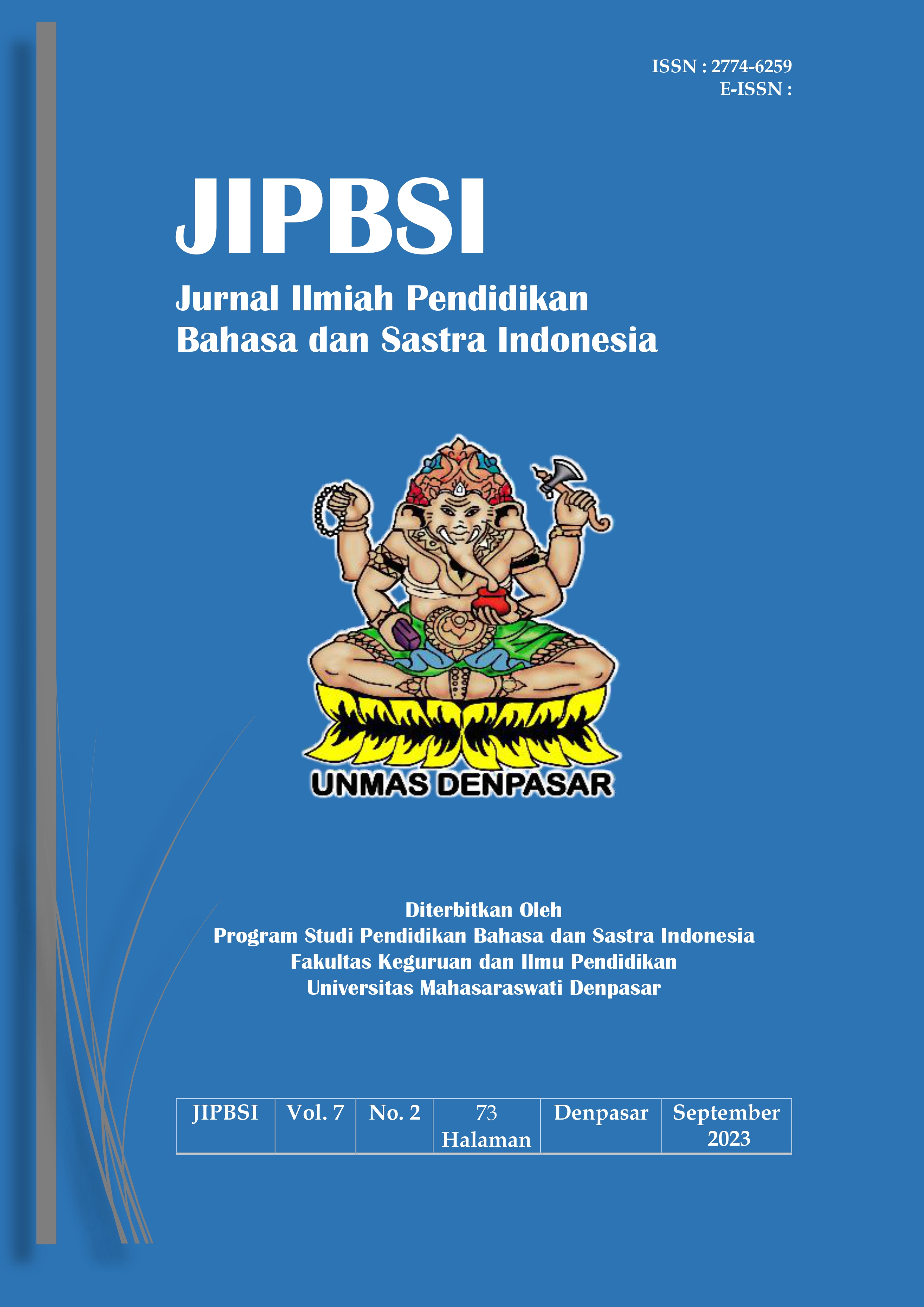ANALISIS DEIKSIS PADA FILM TOBA DREAMS: KAJIAN PRAGMATIK
Keywords:
Persona deixis, time deixis, place deixis, discourse deixis, social deixisAbstract
The aims of this study were: (1) to find out the forms of deixis and (2) the function of deixis in the Toba Dreams film. This type of research used a qualitative descriptive approach by means of descriptive writing. The data collection method was carried out by observing, documenting, observing and taking notes. While the data analysis method used in this study is the Analysis Interactive Model from Miles and Huberman, which divides the steps in data analysis activities into several parts, namely data collection, data reduction, data presentation, and drawing conclusions or data verification. The results of this study show that basically (1) the forms of deixis found in the Toba Dreams film are persona, time, place, discourse and social deixis. Of the five forms of deixis found, the deixis that appears the most in the Toba Dreams film is the use of deixis persona. (2) The function of deixis in Toba dreams, persona deixis functions as personal pronouns. Time deixis functions as a pronoun that refers to when the utterance is spoken. Place deixis functions as a pronoun. Discourse deixis functions as a pronoun in discourse. And social deixis functions as a pronoun as a reference to the social status that exists in society. The conclusion of this study is that five forms of deixis are determined, namely persona, time, place, discourse and social deixis which function as pronouns or references to personal pronouns. , place pronouns, time pronouns, discourse pronouns and social status pronouns.
References
Aliah, Yoce. 2014. Analisis Wacana Kritis Dalam Multiperspektif. Bandung:PT.Refika Aditama.
Alo Liliweri. 1991. Memahami Peran Komunikasi Massa DalamMasyarakat,Bandung: Citra Aditya Bakti.
Alwi, Hasan et.al 1998. Tata Bahasa Buku Bahasa Indonesia. Edisi 3.Jakarta: Badai Pustaka
Arikunto, S. 2006. Metode Penelitian Kualitatif. Jakarta: Bumi Aksara
Arikunto, Suharsimi. (1989). Prosedur Penelitian: Suatu Pendekatan Praktik. Jakarta: Bumi Aksara.
Dewi, Rosnita. 2019. Pragmatik: Antara Teori dan Praktik Berbahasa.Yogyakarta. Deepublish.
Effendy, Onong Uchjana. 2000, Ilmu Komunikasi dan Praktek. Bandung: PT Remaja Rosdakarya
George, Yule. 2006. Pragmatik (edisi terjemahan oleh Indah Fajar Wahyuni dan Rombe Mustajab). Yogyakarta: Pustaka Pelajar.
KBBI (Kamus Besar Bahasa Indonesia). (2005). Jakarta: PT (Persero) penerbitan dan percetakan
Kridalaksana. 1984. Kamus Linguistik. Jakarta: Gramedia
Levinson, Stephen C. 1983. Pragmatics. London: Cambridge University Press
Moleong, Lexy J. (2010), Metodologi penelitian kualitatif, Remaja Rosdakarya, Bandung
Miles, M. B. & Huberman, M. (1992). Analisis Data Kualitatif. Jakarta: Penerbit Universitas Indonesia
Moleong, J.L. (2007). Metode Penelitian Kualitatif. Bandung: PT Remaja Rosdakarya.
Nababan. P.W.J. 1987. Ilmu Pragmatik. Jakarta: Departemen Pendidikan dan Kebudayaan.
Nifmaskossu, dkk., 2019. Tindak Tutur Direktif Upacara Perkawinan Adat , Ida Bagus. 2013. Buku Ajar Landasan Pembelajaran. Bali : Undhiksa Press





